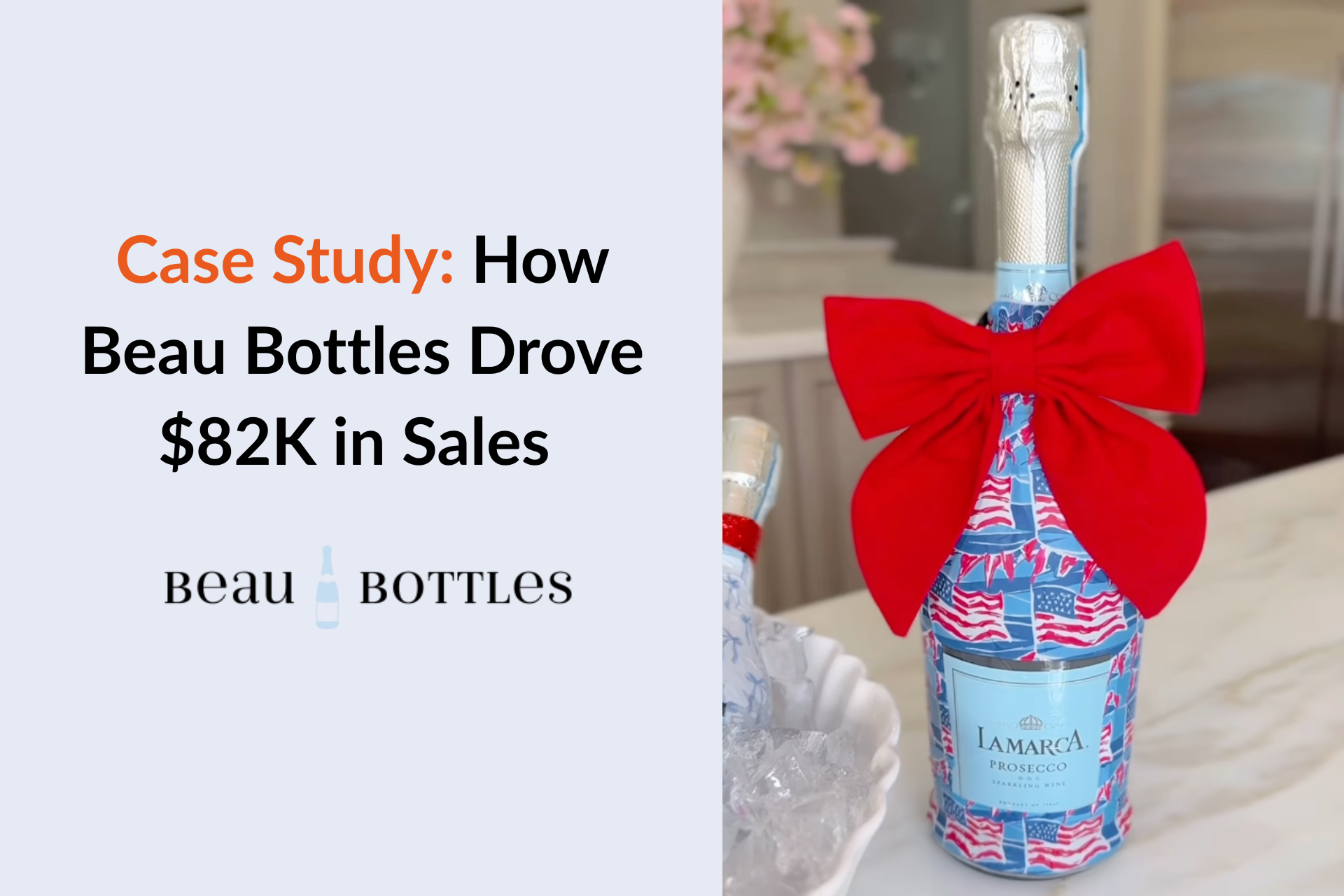





Some say the contact export system is pricey and rigid, others complain that its fake-follower detection and audience engagement metrics can be unreliable or inconsistent, and several note that the scope of supported platforms outside IG/TikTok is too narrow—leaving gaps for those needing broader reach or deeper analytics. These limitations make brands want more transparency, better audit tools, and integrations with more channels or features.
Influencer Hero stands out as one of the best alternatives to InBeat. It offers a full-stack solution with influencer discovery, AI-powered outreach, native affiliate tracking, UGC & content management, and strong analytics—everything under one roof. Its support, pricing tiers, and user interface are built to serve both small brands and scaling enterprises equally.
Here are the top 10 InBeat alternatives we’ll explore in this article:
When exploring influencer marketing platforms, many users end up searching for InBeat alternatives because of repeated issues.
Users often mention inconsistencies in fake-follower detection and audience quality scoring, which makes predicting ROI less reliable. Email and DM accuracy can also be hit-or-miss, leading to wasted time on manual re-verification. On top of this, the platform offers only limited depth in audience demographic insights such as income or brand affinity, which leaves brands guessing about creator fit.
Another frustration is that InBeat shines mostly on Instagram and TikTok, but falls short in supporting platforms like YouTube, Twitch, Pinterest, or LinkedIn. This narrow coverage means creators in B2B niches or long-form content spaces are harder to reach. Without proper cross-platform attribution, it’s also difficult to evaluate how a creator performs across their full social presence.
The outreach tools feel basic, with no sequenced or AI-personalized follow-ups, resulting in lower reply rates compared to competitors. The built-in CRM is lightweight—fine for notes and tags—but lacks deeper pipeline views, reminders, or automated contract workflows. Many users also notice the absence of collaboration features such as content approval flows or structured briefs, which are now standard in other platforms.
Finally, pricing is another sticking point, with rigid credit-based models that become restrictive as brands grow. Users also complain about opaque pricing, frequent upsells, and the need to upgrade earlier than expected. Since there are few native eCommerce or affiliate integrations, teams often have to invest in additional tools to properly track performance, raising the overall cost of ownership.
Our comparison focuses on several key aspects:
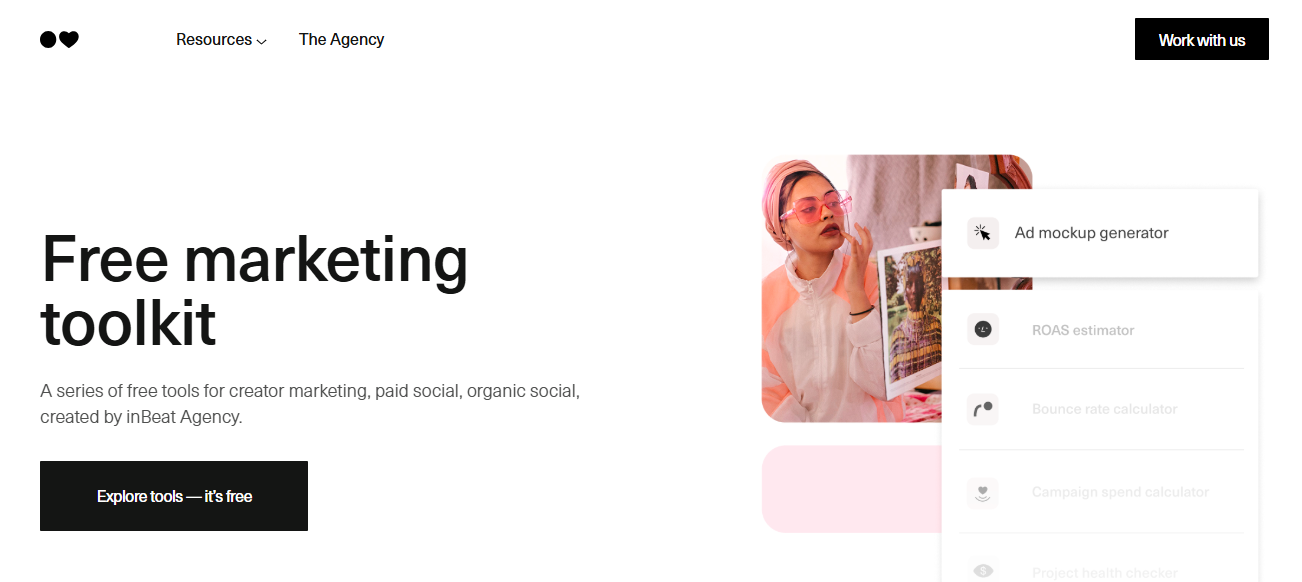
Best For: InBeat is best for small to medium-sized brands or marketers who are new to influencer marketing and want affordable discovery tools. It also works well for micro and nano influencers looking for brand collaboration opportunities.
Platform Coverage:
Pricing: InBeat pricing is custom made. Based on our research you must book a call with their team to know more about plans and prices. However, they do offer free tools such as an influencer search tool, fake follower checker, and engagement rate calculator for those who want to test the platform before committing.
Reviews: 4.5 / 5.0 (Capterra)
Ease of Use (UX/UI): Users highlight InBeat’s clean and intuitive interface, making it easy for beginners and small teams to navigate. The onboarding process is straightforward, with filters and campaign dashboards that are simple to use. However, some mention the analytics dashboard feels basic compared to enterprise-level tools.
Customer Support: Customer support is highly praised, especially for responsiveness and clear communication. Many note that both brands and creators feel well-supported, with helpful guidance during campaign setup and collaboration. A few reviews highlight strict screening processes that can feel like friction during onboarding.

Best For: Influencer Hero is best for growing D2C brands and eCommerce teams on platforms like Shopify, WooCommerce, or Amazon who want to scale influencer and affiliate campaigns with automation, deep analytics, and multi-platform support.
Platform Coverage:
Pricing: Influencer Hero offers flexible pricing plans to accommodate growing brands. All plans include core features and can scale as the influencer program grows.
Reviews: 5.0 / 5.0 (Capterra)
Ease of Use (UX/UI): Influencer Hero is known for its clean, intuitive design and streamlined dashboard. With drag-and-drop campaign setup, automated workflows, and customizable email templates, even non-technical teams can launch campaigns quickly. The Chrome extension and smart automation save hours weekly, making influencer management simple and efficient.
Customer Support: Customer support is one of Influencer Hero’s strongest differentiators. Every plan includes a dedicated account manager from day one, ensuring personalized support. The platform offers 24/7 real-human live chat, responsive email assistance, and an in-platform Help Center packed with written and video tutorials. Pro plan users also gain access to a private Slack channel for continuous support, while optional strategy consultations help guide brands toward growth.
InBeat is primarily focused on Instagram and TikTok, offering a self-serve marketplace model alongside agency support. It provides influencer discovery, basic campaign dashboards, and free tools like mockup generators and calculators. However, its platform coverage is limited, and its analytics capabilities are less advanced, making it more suitable for smaller-scale or niche campaigns.
Influencer Hero stands out as a full-scale solution across 8 major platforms, with advanced features like AI-powered CRM, storefronts, gifting automation, affiliate management, and predictive analytics. Unlike inBeat’s narrower focus, Influencer Hero is designed for brands that want to scale across multiple channels while keeping all campaign management in one place. With dedicated support and enterprise-level automation, it delivers a more robust and long-term solution.
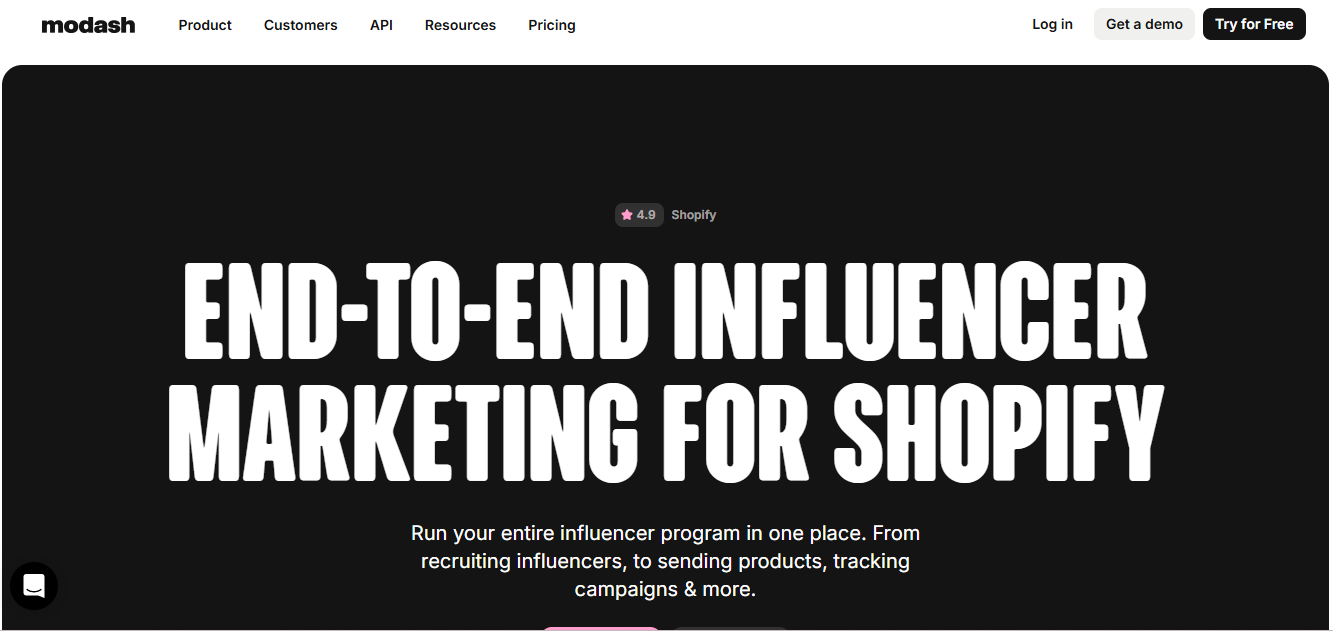
Best For: Modash is best for eCommerce brands, especially those on Shopify, that want to run scalable influencer campaigns across Instagram, TikTok, and YouTube. With a massive creator database and streamlined outreach-to-payment workflows, it suits brands aiming for performance-driven influencer and affiliate marketing.
Platform Coverage:
Pricing: There are different plans and options.
Reviews: 4.7/5 (G2)
Ease of Use (UX/UI): Users highlight Modash’s intuitive interface and smooth navigation. Its discovery filters are easy to configure, and the streamlined campaign dashboard makes moving from discovery to outreach and payments feel cohesive. Some users note that while the platform is packed with features, its workflows remain logical and accessible without a steep learning curve.
Customer Support: Modash is praised for strong onboarding and ongoing support. Every plan includes assistance to get started, and users report responsive help from the support team when questions arise. The platform emphasizes customer education through demos and documentation, helping brands quickly adopt advanced features.
InBeat is often the go-to choice for brands looking for quick access to micro- and nano-influencers, especially on Instagram and TikTok. Its simple UI and free toolkit make it attractive for smaller brands or those just starting with influencer marketing. InBeat also emphasizes fast influencer recruitment and a streamlined onboarding experience, making it easy to launch campaigns quickly.
Modash, on the other hand, is better suited for scaling influencer marketing programs. It provides access to over 350M+ creators, along with advanced filters, fake-follower detection, and audience demographic insights. For brands that need deep vetting, Shopify automation, and real-time analytics, Modash delivers stronger long-term campaign management.
To put it simply: InBeat is ideal for speed and simplicity, while Modash shines in depth, data, and scalability. Smaller brands may find InBeat’s lightweight approach sufficient, but as campaigns grow in size and complexity, Modash becomes the more powerful and future-proof option.

Best For: Upfluence is best for eCommerce brands, agencies, and direct-to-consumer companies looking to manage end-to-end influencer campaigns, from discovery to reporting, in one unified platform.
Platform Coverage:
Pricing:
Reviews: 4.5/5 (G2)
Ease of Use (UX/UI): Users often describe Upfluence’s interface as intuitive and well-organized, especially when handling multiple campaigns at once. The dashboard makes it simple to track influencers, manage communications, and monitor campaign progress without being overwhelming. However, some note that the platform’s rich feature set means there’s a slight learning curve during onboarding.
Customer Support: Upfluence provides dedicated account managers and responsive customer support via email and live chat. Users mention that support is quick to respond and proactive in offering guidance during campaign setup. On the downside, some reviews indicate that advanced issues can take longer to resolve compared to more straightforward requests.
When comparing InBeat vs Upfluence, the biggest difference comes down to simplicity vs enterprise-grade depth. InBeat focuses on micro-influencer discovery at scale, making it ideal for brands that want a lean, cost-effective way to connect with many smaller creators. Its strength lies in helping you run fast campaigns without heavy overhead.
Upfluence, on the other hand, is a full-suite influencer marketing platform with CRM, eCommerce integrations, affiliate tracking, and advanced analytics. It’s a stronger fit for brands that need end-to-end campaign management and can justify custom pricing for more robust features.
In short: choose InBeat if you need scale and efficiency with micro-influencers at a lower cost, and choose Upfluence if you need a comprehensive all-in-one platform with deep integrations and advanced reporting.

Best For: Captiv8 is best for enterprise-level brands and agencies managing large-scale influencer campaigns across multiple verticals, with advanced needs for campaign tracking, competitor insights, and enterprise storefront integrations.
Platform Coverage:
Pricing: There are different pricing options:
Reviews: 4.1/5 (G2)
Ease of Use (UX/UI): Captiv8 offers a professional-grade interface with extensive filters and reporting tools, which makes it powerful but sometimes overwhelming for smaller teams. Users appreciate the depth of campaign collaboration tools like direct chats with influencers and team approvals, but some find the platform less intuitive compared to lightweight alternatives like InBeat.
Customer Support: Customer support reviews are mixed. While the company provides dedicated enterprise account management, multiple reports highlight unresponsive support teams and unresolved payment issues from both creators and brands. This inconsistency makes support a weak point for Captiv8, especially when compared to InBeat’s reputation for clear and responsive communication.
When comparing InBeat vs Captiv8, the most striking difference is pricing and target audience. InBeat is designed for smaller brands and agencies, with pricing starting as low as $35/month, making it accessible for startups and lean teams. In contrast, Captiv8 requires a $25K annual commitment, plus steep additional costs for affiliate and storefront features, making it a solution primarily for large enterprises.
In terms of usability, InBeat is praised for its simplicity and ease of use, with a clean interface and quick onboarding that appeals to beginners. Captiv8, on the other hand, provides far deeper analytics and competitive tracking, but its complexity and steep learning curve can be a challenge for smaller teams.
Customer support is another big differentiator: InBeat is known for responsive, transparent communication, while Captiv8 has faced criticism for slow support and unresolved payment issues. Ultimately, brands should choose InBeat if they want affordability, ease of use, and quick setup, while Captiv8 is better suited for enterprise organizations needing robust analytics, competitive intelligence, and enterprise-level campaign management.

Best For: CreatorIQ is best for enterprise brands and large agencies managing complex influencer campaigns at scale. It’s ideal for companies that require advanced analytics, deep integrations, and compliance tools alongside influencer discovery and campaign management.
Platform Coverage:
Pricing: There are different plans:
Reviews: 4.7/5 (G2)
Ease of Use (UX/UI): Users generally describe CreatorIQ as feature-rich but with a steeper learning curve. The interface is highly customizable, which is powerful for advanced teams but may feel overwhelming for smaller brands or beginners. Once onboarded, many users appreciate the depth of control and automation available.
Customer Support: Reviews indicate that CreatorIQ provides dedicated account managers and responsive customer support, especially for enterprise clients. However, smaller teams note that the platform can feel less intuitive without guided support, meaning the quality of onboarding and training is crucial to get the most out of the system.
When comparing InBeat vs CreatorIQ, the biggest distinction comes down to simplicity vs enterprise power. InBeat is best for small to medium brands that want a clean, intuitive DIY influencer marketplace focused on Instagram and TikTok discovery. Pricing is custom-made and generally more accessible for brands experimenting with influencer marketing.
On the other hand, CreatorIQ is built for enterprises with large-scale influencer programs. It offers advanced analytics, deep integrations, and fraud detection tools, making it ideal for global brands that need compliance and full-funnel attribution . However, it comes with a higher cost and steeper learning curve, meaning it’s not as beginner-friendly.
In short, if you’re a smaller brand looking for ease of use, budget flexibility, and quick campaign setup, InBeat is the better fit. But if you’re an enterprise running global influencer campaigns with complex tracking needs, CreatorIQ is the stronger choice.

Best For: HypeAuditor is best for mid-size to large brands and agencies that want advanced influencer analytics and cross-platform campaign management across Instagram, TikTok, YouTube, Twitch, X, and Snapchat . It’s a strong choice if you need to ensure authenticity and track ROI beyond surface-level metrics.
Platform Coverage:
Pricing: HypeAuditor’s pricing is customizable, with the standard “Business” plan starting at around $10,000/year. Pricing can be adjusted based on the number of reports, active campaigns, and platform usage. They also offer a 24–48 hour free trial for new users.
Reviews: 4.6/5 (G2)
Ease of Use (UX/UI): Users note that HypeAuditor provides an extensive set of tools, but the platform can feel complex for beginners. While the dashboards are detailed and customizable, reviewers mention that onboarding or training may be required to unlock the full potential of the tool .
Customer Support: HypeAuditor offers onboarding support and is responsive in resolving issues, but some users mention that enterprise-style service requires close communication. The platform’s dedicated assistance is appreciated, especially when setting up campaigns or interpreting in-depth reports.
InBeat is designed for small to medium brands or marketers who want an easy-to-use influencer marketplace focused on Instagram and TikTok. It’s highly praised for its clean UX, responsive support, and value for money, but it has limited platform coverage and lighter analytics.
On the other hand, HypeAuditor supports a much broader range of platforms (Instagram, TikTok, YouTube, Twitch, X, Snapchat) and is ideal for agencies or enterprises that need in-depth analytics, ROI tracking, and eCommerce integrations. The trade-off is cost and complexity—its entry pricing starts at around $10,000/year, and some users say onboarding is needed.
In short, choose InBeat if you want a budget-friendly, intuitive tool for Instagram/TikTok discovery and outreach, especially if you’re starting out. Opt for HypeAuditor if you need enterprise-grade multi-platform analytics and campaign reporting, and you have the budget to match.

Best For: GRIN is best for DTC and eCommerce brands that want to run end-to-end influencer programs with deep integrations into Shopify, WooCommerce, and other eCommerce systems. It’s especially strong for brands that need affiliate tracking, product seeding, and UGC management at scale.
Platform Coverage:
Pricing:
Reviews: 4.5 / 5.0 (G2)
Ease of Use (UX/UI): Most users find GRIN’s interface powerful but more complex compared to lighter-weight platforms. The depth of integrations, campaign pipelines, and CRM tools can feel overwhelming at first, but once onboarded, teams say the workflows save significant time. Some reviews note occasional performance issues like slow loading or buggy content uploads.
Customer Support: Customer support reviews for GRIN are mixed. Many users appreciate the onboarding process and access to dedicated strategists. However, some note longer response times and difficulties resolving technical bugs or billing disputes. This inconsistency makes support a weaker point compared to competitors like inBeat.
InBeat is positioned as a lightweight, self-serve marketplace, best for small to mid-sized brands focusing on Instagram and TikTok. It offers ease of use, responsive support, and strong micro/nano influencer discovery, with custom pricing tailored to needs.
GRIN, on the other hand, is a full enterprise suite with deep eCommerce integrations, affiliate tracking, and UGC management. However, it comes at a steep cost—around $25,000/year minimum, which makes it less accessible for smaller teams. GRIN is best suited for established brands with larger budgets that need to run campaigns across multiple touchpoints, from gifting to ROI analytics.
Choose inBeat if you want a user-friendly, affordable entry point to influencer discovery and campaign management. Choose GRIN if you’re a DTC brand with a large catalog and budget, needing full eCommerce integration and advanced reporting.
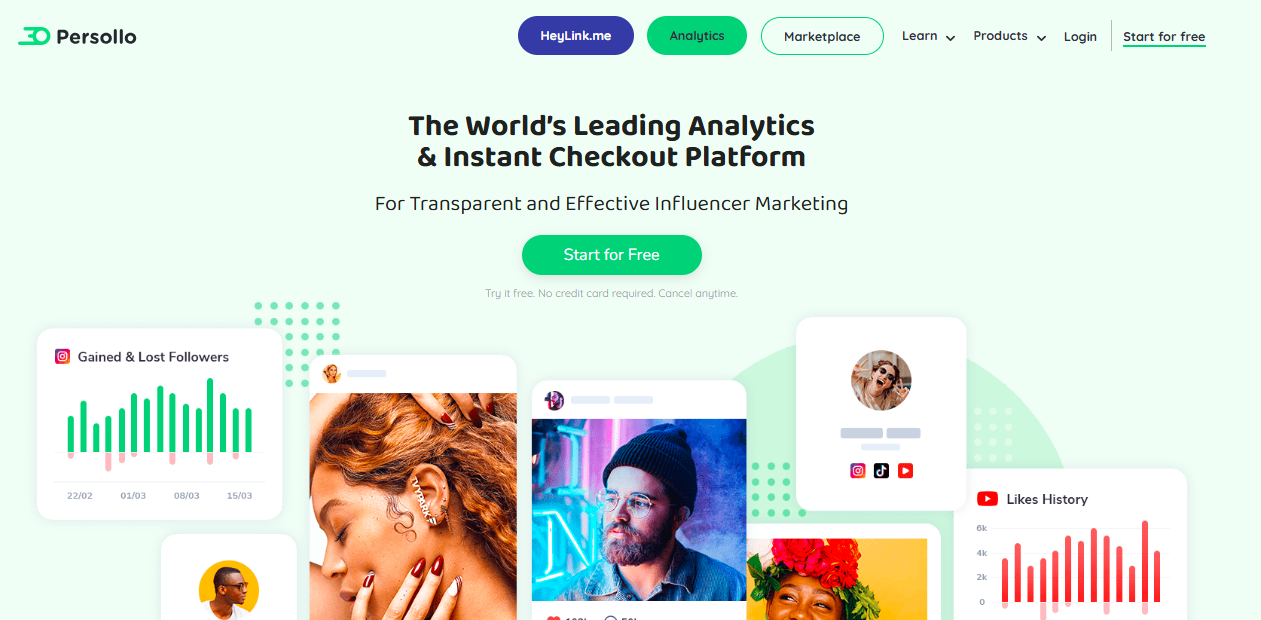
Best For: Persollo is best for brands that want a fully managed influencer service at an affordable fixed price. It’s particularly suited for small to mid-sized eCommerce businesses that prefer pre-vetted influencers delivered directly rather than spending time on self-service discovery platforms.
Platform Coverage:
Pricing: Based on our research, Persollo offers different plans and options.
Reviews: No verified public reviews available on major platforms such as G2, Capterra, or Trustpilot.
Ease of Use (UX/UI): Since Persollo currently operates as a managed service rather than a self-service platform, users highlight its simplicity and low learning curve—brands don’t need to navigate complex dashboards or filters. Instead, Persollo handles discovery and outreach in the background, providing ready-to-engage influencers. However, some users mention that the lack of a self-service dashboard limits hands-on control.
Customer Support: Persollo is praised for personalized customer service, especially with dedicated account managers available via WhatsApp and email. Users find this high-touch support valuable for campaign execution. That said, others note that reliance on manual communication sometimes slows down reporting and campaign tracking.
When comparing inBeat and Persollo, the key difference is self-service vs managed service. inBeat gives you direct access to its influencer database and powerful search filters, making it ideal for teams that want hands-on control over discovery and outreach. Persollo, on the other hand, removes the DIY aspect entirely—you pay a flat $1,000/month and get 30–40 pre-vetted influencers delivered to you, along with a dedicated account manager.
Another major distinction lies in pricing flexibility. inBeat charges based on the number of searches and team seats, which can scale costs upward for larger teams. Persollo’s model is simpler and more predictable but lacks the customization that self-service platforms provide.
Choose inBeat if you want granular control, advanced filtering, and integration options. Choose Persollo if you prefer simplicity, predictable pricing, and having influencers sourced for you without much platform navigation.
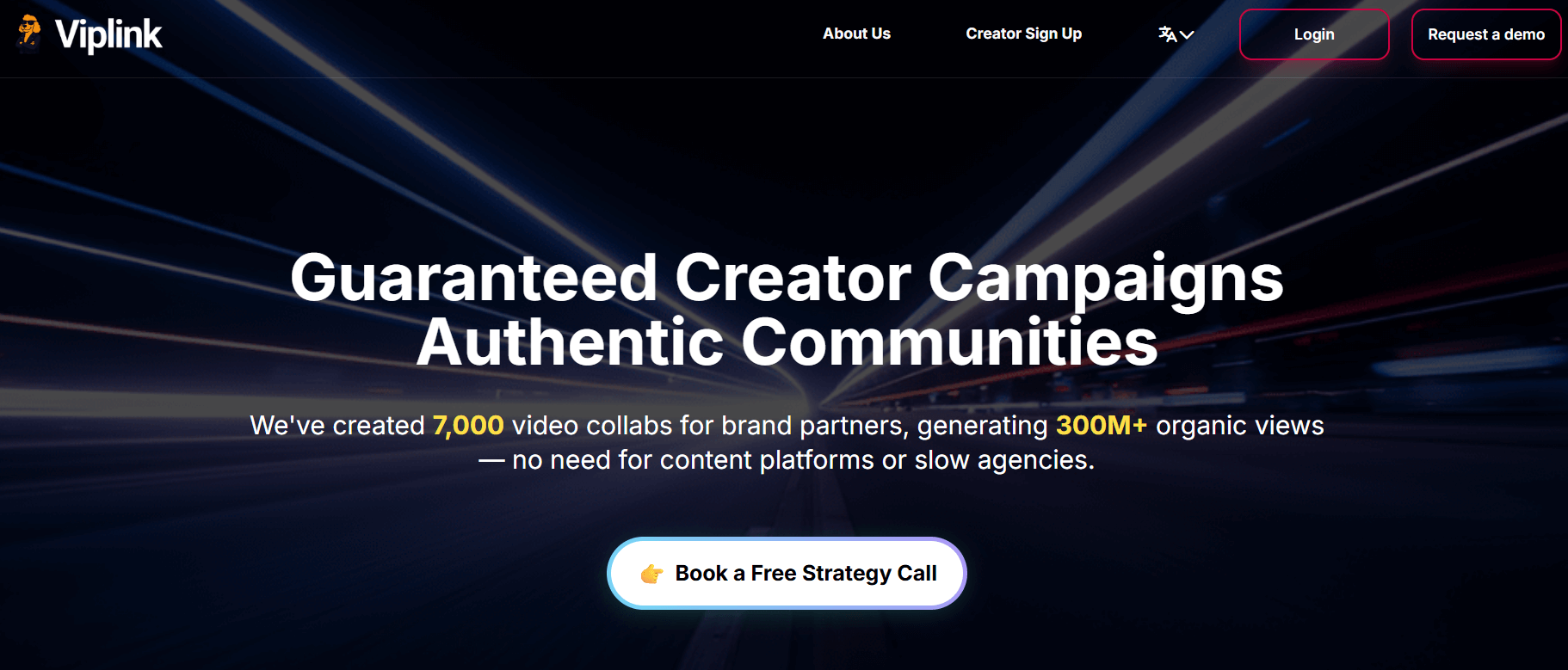
Best For: Viplink AI is best for consumer brands, DTC companies, and marketing teams that want to engage audiences through authentic creator collaborations and UGC-driven campaigns without upfront costs.
Platform Coverage:
Pricing: No upfront fees; payment is only required once you approve creators and content. However, brands have to pay an additional fee—amount not publicly disclosed—based on what is paid to each creator.
Reviews: 4.4/5.0 (G2)
Ease of Use (UX/UI): Users highlight Viplink AI’s one-click content approval flow, which reduces friction and avoids endless back-and-forth emails. The dashboard is streamlined, and creator management is automated, though some users note limited collaboration features and restricted geographic reach.
Customer Support: Viplink AI handles briefings, timelines, and activations from start to finish, letting brands remain hands-off while keeping control of approvals. Communication is generally clear, though some users wish for more transparency around updates and release notes.
When comparing InBeat vs Viplink AI, the most obvious difference lies in their pricing models. InBeat uses a custom pricing structure tailored to each brand’s needs, while Viplink AI has no upfront costs, charging only after you approve creators and their content, though it adds an undisclosed additional fee tied to creator payments.
In terms of features, InBeat excels in influencer discovery—especially for micro and nano influencers on Instagram and TikTok—and includes a free toolkit with calculators and ad mockup generators. Viplink AI, on the other hand, focuses on UGC-driven campaigns with its one-click approval flow and organic brand placement in creator-led conversations.
If your priority is simplicity, vetted micro-influencer discovery, and responsive support, InBeat may be the better fit. But if you want risk-free entry into influencer marketing with ready-to-use UGC and no upfront fees, Viplink AI could be more appealing. Ultimately, the choice depends on whether you value InBeat’s transparent simplicity or Viplink AI’s full-service, UGC-first model.
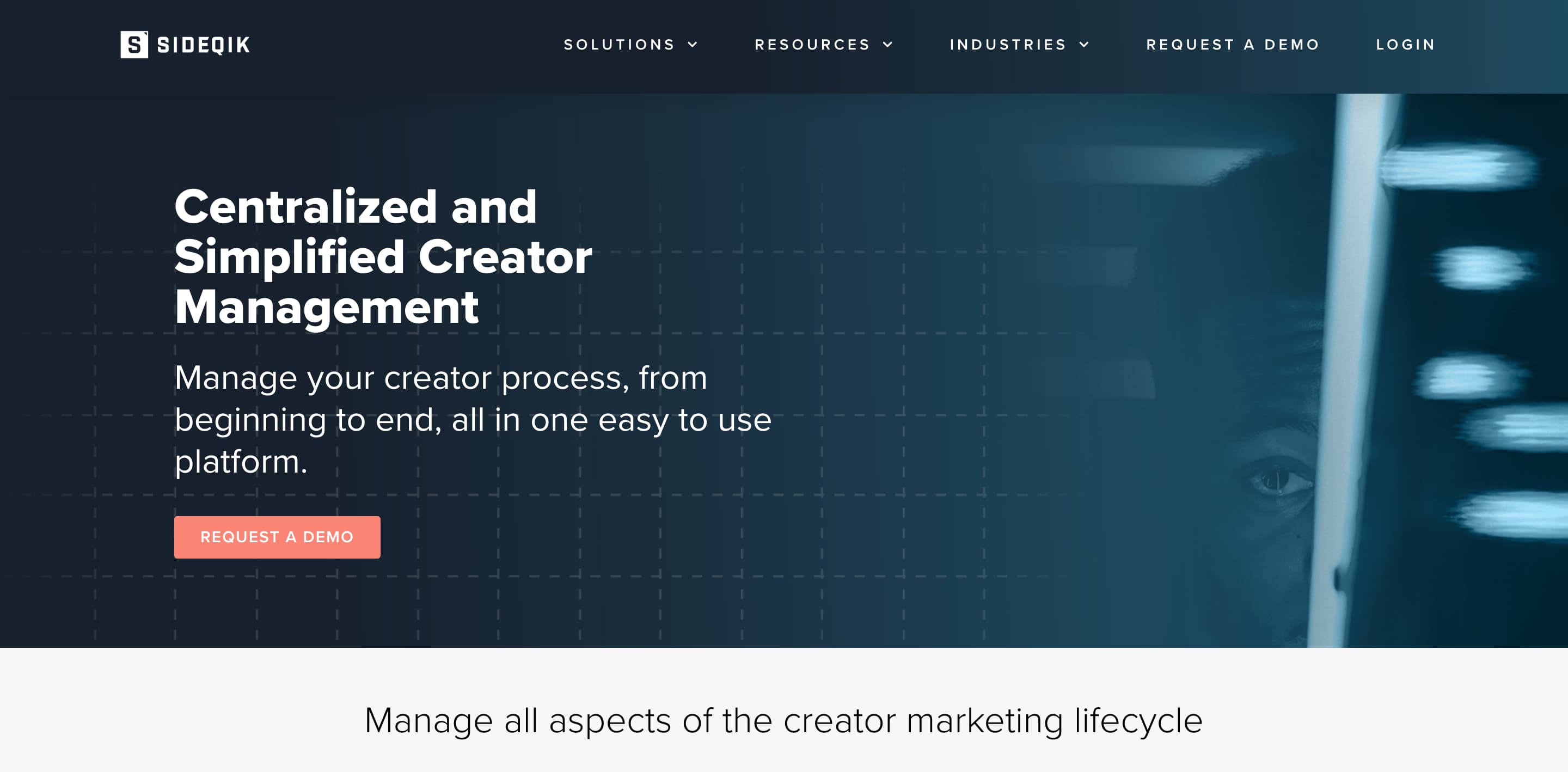
Best For: Sideqik is best for brands and agencies looking to manage large-scale influencer campaigns with an emphasis on campaign automation, audience insights, and creator relationship management. It’s particularly useful for companies running long-term ambassador or affiliate programs.
Platform Coverage:
Pricing: Undisclosed.
Reviews: 4.2 / 5.0 (G2)
Ease of Use (UX/UI): Users mention that Sideqik offers a professional and data-driven interface, though it can feel complex at first for smaller teams. Once set up, the workflows make influencer campaign management much more efficient. Many appreciate the intuitive dashboards for reporting, though the discovery process can sometimes require a learning curve compared to lighter tools.
Customer Support: Customers report that Sideqik’s support team is responsive and attentive, especially for enterprise clients who benefit from dedicated success managers. Support is often described as proactive, offering training and onboarding sessions to make the platform easier to adopt. Some users note that smaller accounts may not receive the same level of handholding as larger clients.
When comparing InBeat and Sideqik, the key difference lies in pricing and target audience. InBeat offers a more affordable option starting at $1,000/month for managed services that deliver 30–40 pre-vetted influencers monthly, making it appealing for smaller brands or startups that need predictable influencer discovery without high overhead.
Sideqik, on the other hand, is designed for larger brands and agencies with enterprise-level budgets. It provides comprehensive campaign automation, deep audience insights, and advanced CRM features. While it requires a bigger investment, Sideqik excels for businesses running long-term, structured influencer and ambassador programs where tracking ROI and building relationships is crucial.
In short, if you’re a smaller eCommerce brand focused on influencer discovery at scale, InBeat is the cost-effective choice. But if you’re an established company needing in-depth analytics, campaign automation, and integrations with your existing systems, Sideqik is the more powerful option.
When exploring InBeat alternatives, it’s clear that different platforms cater to different needs—whether it’s Sideqik for enterprise-level campaign management, Grin for influencer-creator lifecycle management, or Persollo and Viplink AI for specialized workflows. However, if you’re looking for a solution that balances powerful features, affordability, and usability, Influencer Hero stands out as one of the best alternatives. It provides everything from influencer discovery and CRM to content tracking, reporting, and automated outreach in one platform.
Ultimately, your choice depends on your brand’s size, budget, and campaign goals. For smaller eCommerce brands, InBeat’s managed service model is attractive, but if you want to scale influencer programs, track ROI, and manage collaborations seamlessly, Influencer Hero is a more flexible and complete option. To see how it can transform your influencer marketing efforts, consider booking a free demo with Influencer Hero today.

Some of the best alternatives include Influencer Hero, Sideqik, Grin, HypeAuditor, and Persollo. Influencer Hero stands out for offering an all-in-one platform with discovery, outreach, analytics, and campaign management at competitive pricing.
While InBeat focuses heavily on influencer discovery and managed services, Influencer Hero provides a complete influencer marketing solution—including CRM, automated outreach, performance tracking, and UGC/content management. This makes it more scalable for brands running multiple campaigns.
Smaller eCommerce brands often prefer InBeat’s managed service for its predictable pricing and influencer delivery. However, many also choose Influencer Hero as it offers more features under one roof while remaining affordable.
For enterprises and agencies managing complex, long-term campaigns, Sideqik and Grin are strong choices. They offer robust CRM, automation, and reporting tools. That said, Influencer Hero is increasingly chosen by larger brands as well, since it combines scalability with user-friendly design.
Platforms like Grin and Sideqik can be significantly more expensive, targeting enterprise budgets. Influencer Hero provides transparent and competitive pricing, (649/month) making it a strong option for both mid-sized and large brands.



Schedule a Demo with one of our media experts below.